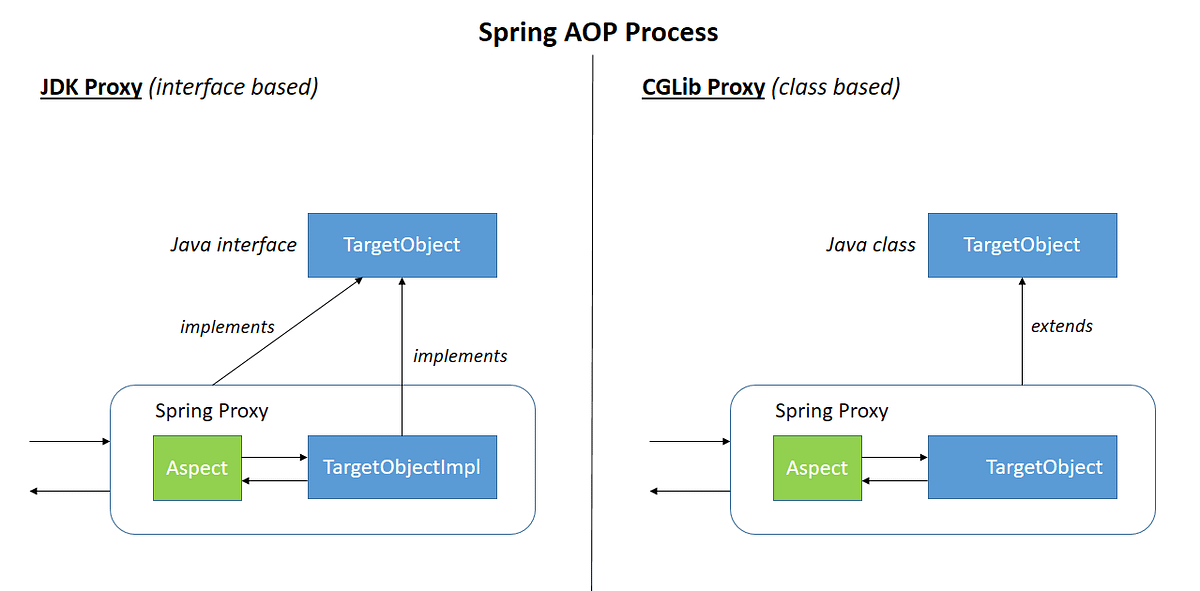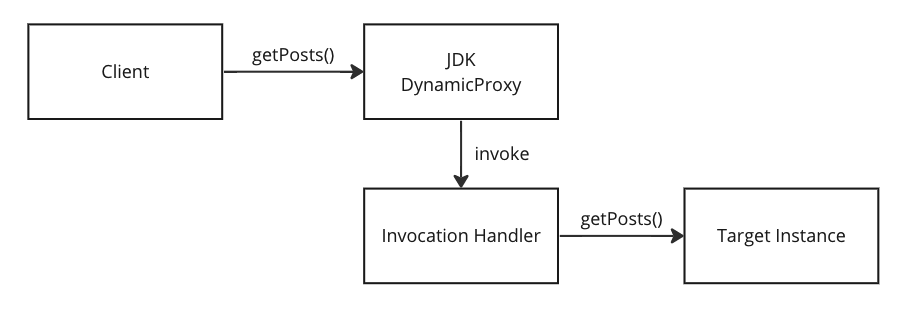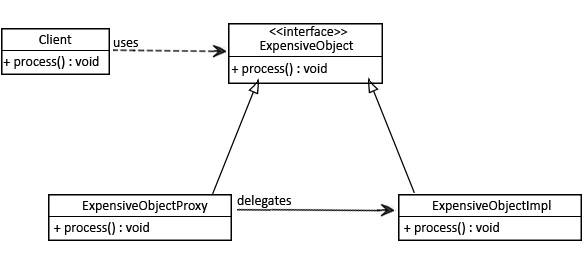java dynamic proxy
java dynamic proxy

Java Dynamic Proxy is a powerful and flexible mechanism that allows you to intercept, modify, and extend the behavior of an object at runtime. It is based on the concept of proxies, which act as intermediaries between a client and a target object.

A dynamic proxy is created by implementing the InvocationHandler interface, which has a single method: invoke. This method takes an Object parameter (the proxy) and a Method parameter (the method to be invoked), and returns an Object result (the return value of the method).

Here's an example implementation:
public class DynamicProxy implements InvocationHandler {private Object target;
public DynamicProxy(Object target) {
this.target = target;
}
@Override
public Object invoke(Object proxy, Method method, Object[] args)
throws Throwable {
// Call the original method on the target object
Object result = method.invoke(target, args);
// Perform some additional processing or modification
if (result instanceof String) {
return "Proxy modified: " + (String) result;
} else {
return result;
}
}
}
To use this proxy, you create an instance of it and pass the target object as a constructor argument. Then, you create a Proxy instance with the dynamic proxy as the handler:
// Target object to be proxiedMyService service = new MyService();
// Create the dynamic proxy
DynamicProxy proxy = new DynamicProxy(service);
// Create a Proxy instance with the dynamic proxy as the handler
MyService proxyService = (MyService) Proxy.newProxyInstance(
getClass().getClassLoader(),
new Class[]{MyService.class},
proxy);
// Use the proxied service
String result = proxyService.doSomething();
System.out.println(result); // prints "Proxy modified: original result"
In this example, when you call doSomething() on the proxied service, it will first invoke the method on the target object (the original implementation), and then modify the return value before returning it.
Java Dynamic Proxy has many applications, such as:
Aspect-Oriented Programming: You can use dynamic proxies to implement aspects like logging, caching, or security, which can be applied uniformly across multiple objects. Method Interception: You can intercept method calls and perform some additional processing or modification before or after the original method is invoked. Object Wrapping: You can create a proxy that wraps another object, allowing you to add new behavior or modify existing behavior without modifying the original object.Some of the key benefits of Java Dynamic Proxy include:
Flexibility: Dynamic proxies allow for runtime modification and extension of object behavior, making it easier to adapt to changing requirements. Decoupling: By using a dynamic proxy, you can decouple clients from target objects, reducing dependencies and improving modularity. Reusability: Dynamic proxies can be reused across multiple objects and scenarios, promoting code reuse and minimizing duplication.Overall, Java Dynamic Proxy is a powerful tool for building flexible, modular, and reusable software systems.
Java proxy class example

Here's an example of a Java proxy class:
ProxyPatternDemo.java
import java.util.List;
import java.util.ArrayList;
public class ProxyPatternDemo {
public static void main(String[] args) {
// Client code.
Image image = new Image("image.jpg");
ImageProxy proxy = new ImageProxy(image);
List list = new ArrayList<>();
for (int i = 0; i < 10; i++) {
try {
proxy.display(i);
} catch (Exception e) {
System.out.println(e.getMessage());
}
}
}
}
Image.java
public class Image {
private String filename;
public Image(String filename) {
this.filename = filename;
}
public void display(int i) {
// This will load the image, but it's expensive.
System.out.println("Loading " + i);
}
}
ImageProxy.java
import java.util.List;
public class ImageProxy implements Image {
private Image image;
private List loadedImages = new ArrayList<>();
public ImageProxy(Image image) {
this.image = image;
}
@Override
public void display(int i) {
if (!loadedImages.contains(String.valueOf(i))) {
System.out.println("Loading " + i);
try {
Thread.sleep(1000); // Simulate loading time.
} catch (InterruptedException e) {
System.out.println(e.getMessage());
}
loadedImages.add(String.valueOf(i));
} else {
System.out.println("Proxy: Displaying already loaded image for the " + i);
}
}
}
In this example, we have an Image class that represents a real-world image. The display(int) method is expensive because it simulates the time it takes to load an actual image.
We then create a proxy class called ImageProxy that implements the same interface as Image. The ImageProxy class maintains a list of loaded images and checks if the requested image has already been loaded. If it hasn't, it loads the image and adds it to the list. If it has, it simply displays the message "Proxy: Displaying already loaded image for the ".
The client code (ProxyPatternDemo) creates an instance of Image and uses it to display images. However, instead of directly calling display(int) on the Image object, we create a proxy object using new ImageProxy(image) and use that to call display(int).
This proxy class acts as an intermediary between the client code and the actual Image class, providing additional functionality such as caching loaded images. The proxy can also add other logic, like logging or error handling, without affecting the original Image class.
Benefits of using proxies include:
Decoupling: Clients don't need to know about the existence of a proxy. They simply use theImageProxy interface. Caching: We can cache loaded images so that subsequent requests for the same image are faster and more efficient. Error handling: We can add error handling logic in the proxy, making it easier to catch and handle exceptions.
Proxies provide a flexible way to extend or modify the behavior of an object without changing its underlying implementation. They are useful when you want to add additional functionality or caching to an existing object without affecting the client code.





























